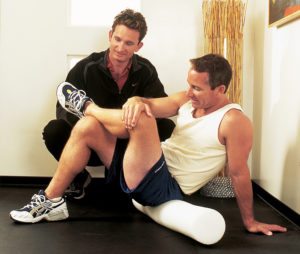Research shows that 90% of personal training clients report muscle and joint pain affecting their ability to work out successfully. As a result, integrating corrective exercise into personal training programs is a must-have skill for all fitness professionals.
Integrating Corrective Exercise into Personal Training
To help you introduce clients to corrective exercise consider implementing the following strategies so both your clients and your business can benefit.
Make Your Clients Aware of Your New Skills: To get your clients excited about corrective exercise tell them about any courses you are taking, conferences and/or lectures you are attending, seminars you are giving, and articles/blogs you might be writing on the subject of corrective exercise. This will make them aware of your interests in this area and help create dialogue so that you can take the opportunity to introduce corrective exercise strategies into their program.
Changing Programming: Some of your current clients may not be aware that you offer corrective exercise services. As such, they may already utilize someone else’s services to help them alleviate their aches and pains. In these cases you will have to work diligently to earn the opportunity to implement corrective exercises into their programs. To achieve this try the following strategies:
Offer Free Trials: A free offer or trial of your corrective exercise services is an excellent way to enable current clients to experience your skills and earn their business as corrective exercise clients.
Assess Imbalances: Integrate corrective exercise into current client programming by utilizing musculoskeletal assessments during their workout or session.
Remind Clients That You Are A Specialist: Take every opportunity to remind clients of the corrective exercise strategies you have shown them. This will gradually solidify your specialist status in their eyes.
Here’s some simple tips to help clients remember (and benefit from) their corrective exercise programming:
- Each time you show a client new corrective exercise strategies, take a picture of the person performing those exercises. Then either e-mail the pictures to the client after their session or print them out them so they can take the images with them.
- When discussing the details of the exercises such as how to perform them or how often, work together with your client to come up with directions for the exercises. Doing this will help your client remember exactly what they’re supposed to do with each exercise and, more importantly, get them to feel more personally involved in the process with you; this will increase their adherence and motivation to want to do these new “corrective” exercises.
- Include written instructions with the accompanying photos of their corrective exercises. The pictures and instructions are a great way to give clients tangible reminders of their experience of the corrective exercise specialty services you provide.
- If you want to truly keep yourself in the forefront of your clients’ minds, make personalized client workbooks or homework folders for them so they can organize their corrective exercise instructions. Creating individualized client workbooks dedicated to corrective exercise homework is a great way to get your clients involved and it also helps to brand your corrective exercise services.
Follow-Up With Clients: Whenever you have shown a client a corrective exercise strategy or technique they can use to help alleviate their particular ache and/or pain, follow-up with them in a subsequent session or appointment to review what you told them to do. Reviewing exercises in this manner will enable clients to ask you any questions that may have come up as they did the exercise(s). It also gives you the opportunity to provide them with positive feedback on gains they have made since utilizing the corrective exercises in their program (e.g., pain reduction or improved movement).
As you further obtain, develop and enhance your corrective exercise knowledge it is important to not only attract new clients, but inform current clients of your enhanced specialty skills so that you, your clients and your business can continue to grow.
For information on how to become a certified Corrective Exercise Specialist (CES) check out the industry’s highest-rated CES qualification here or click on the image below.
